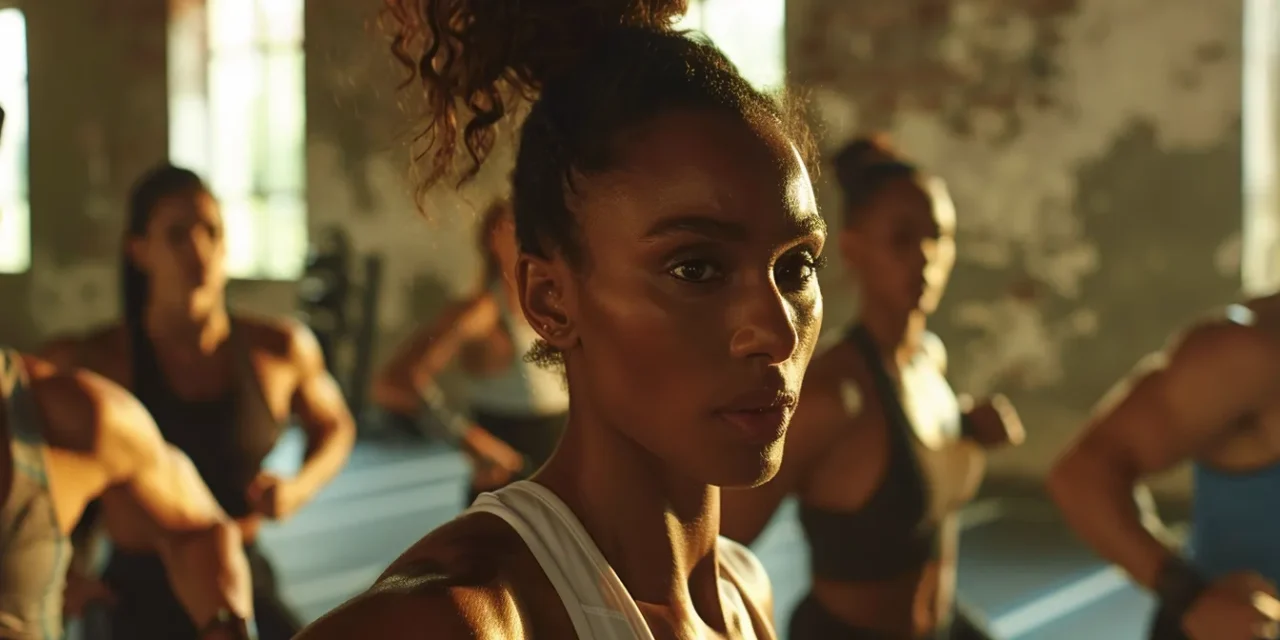Table Of Contents:
- Integrated Fitness: A Holistic Approach to Health and Wellness
- Key Takeaways
- Embracing Integrated Fitness for Improved Mental Health
- Understanding the Link Between Physical and Mental Wellness
- Techniques That Blend Mental and Physical Exercises
- Success Stories of Integrated Fitness Transformation
- How Integrated Fitness Transforms Lifestyle Choices
- Making Healthier Food Choices as Part of Your Regimen
- The Impact of Regular Movement on Sleep Quality
- Why Hydration Is Key in a Holistic Fitness Approach
- Tailoring Integrated Fitness to Individual Needs
- Assessing Personal Health and Fitness Levels
- Setting Realistic and Achievable Goals
- Adjusting Routines to Cater to Changes in Health Status
- The Role of Technology in Integrated Fitness Solutions
- Apps and Gadgets That Support Holistic Health Monitoring
- Virtual Classes and Their Place in an Integrated Fitness Plan
- Using Social Media for Motivation and Community Support
- Overcoming Challenges on the Path to Integrated Fitness
- Dealing With Motivation Dips and How to Combat Them
- Overcoming the Barrier of Limited Time With Effective Planning
- Navigating Injuries and Temporary Setbacks
- Integrated Fitness Trends to Watch
- Emerging Practices in Holistic Health and Fitness
- Predictions on the Future of Integrated Fitness Programs
- How Community and Cultural Shifts Influence Fitness Trends
Integrated Fitness: A Holistic Approach to Health and Wellness
Integrated fitness goes beyond the traditional squat or isolated exercise, nurturing the body and mind as a cohesive unit. It isn’t exclusive to weight lifting or aerobic workouts; instead, it encompasses a variety of practices aimed at enhancing overall wellness and minimizing injuries. By harmonizing physical activity with nutritional guidance and stress management, integrated fitness tailors holistic health strategies to fit each individual’s unique lifestyle and needs. As we delve into this comprehensive approach to wellness, we will discover the innovative ways technology synergizes with fitness and the emerging trends that are shaping healthier lives. Stay with me to unravel the integrated fitness framework that might just redefine your health journey.
Key Takeaways
- Integrated fitness enhances both physical health and mental well-being
- Consistent movement notably improves sleep quality and overall health
- Personalized assessments are crucial for tailoring effective fitness strategies
- Technological advances facilitate flexible, personalized health monitoring and workouts
- Cultural trends significantly influence the evolution of fitness practices
Embracing Integrated Fitness for Improved Mental Health

The intricate connection between our physical form and mental state is much more than anecdotal; science continuously reveals the profound interplay between the two. Medicine has long advocated for the unity of mind and body, and as I delve deeper into integrated fitness practices, the relevance of these insights becomes clear. Utilizing techniques that seamlessly blend mental exercises with physical movement not only bolsters the mass and strength of muscle but also improves overall mental health, leading to an enriched quality of life. Stories of transformation, where integrated fitness has been the catalyst, reaffirm the potential of this comprehensive approach to wellness.
Understanding the Link Between Physical and Mental Wellness
The journey through the various phases of personal training often leads to the surprising revelation that motion itself acts as a form of insurance against mental instability. As I guide clients through performance training, it becomes evident that the physical exertion and the mental focus required initiates a virtuous cycle of well-being. The physical transformations are visible, yet it’s the clarity and positivity in their mindset that truly underscores the symbiotic relationship between the two realms of wellness.
Techniques That Blend Mental and Physical Exercises
In my practice, I incorporate the principles of exercise physiology to create routines that engage the body and mind simultaneously, yielding health benefits that surpass regular training. My approach integrates medical knowledge with fitness strategies, ensuring that nutrition advice complements the physical regimen for holistic development. This methodology champions health promotion beyond the gym, laying a foundation for sustainable well-being.
Success Stories of Integrated Fitness Transformation
My exposure to transformative stories within the sphere of integrated fitness is extensive, often involving individuals whose lives were changed through education about and engagement in specialized programs. One compelling narrative I recall is of a person who, after incorporating yoga into their routine, not only saw improvement in body composition but also experienced an astounding turnaround in mental resilience and positivity. Their journey, supported by the applied exercise science principles I adhere to in my ACE–certified training, is a testament to the power of an all-encompassing fitness strategy.
Embracing integrated fitness not only elevates our mental well-being; it also reshapes our daily life choices. Let’s delve into how this holistic approach to fitness can transform our lifestyle habits for the better.
How Integrated Fitness Transforms Lifestyle Choices

Embracing the principles of integrated fitness not only influences our exercise routines but also gradually reshapes our daily habits, leading to an enhanced overall wellbeing. I’ve observed how my clients, through adopting a fitness regimen that emphasizes core stability and involves dynamic movements, find themselves instinctively gravitating towards more nutritious food options. This inherent shift towards healthier eating patterns acts as a form of therapy for the body, restoring vitality and reducing pain. Moreover, incorporating consistent physical activity into one’s schedule invariably enriches the quality of sleep, an experience echoed by many whom I’ve had the privilege to guide. Additionally, the emphasis on staying hydrated – a cornerstone of any holistic approach – becomes an intuitive part of their lifestyle, ensuring that their bodies and minds are well-nourished and functioning at their peak. This integrated approach to fitness, akin to operating a seamless ios, brings about profound and lasting changes that transcend the gym and infiltrate every aspect of one’s life.
Making Healthier Food Choices as Part of Your Regimen
My certification as a fitness professional has instilled a deep understanding of the value that nutritional choices play in overall wellness, and through the group classes I lead, I emphasize this. Participants who commit to improving their physical fitness often note an organic development of preferences for foods that support their energy and health goals. As a certified trainer, reinforcing the importance of such choices is critical, for it is in the synergy of diet and exercise that true progress lies.
The Impact of Regular Movement on Sleep Quality
My years spent guiding individuals on their fitness journeys have consistently illuminated a fundamental truth: regular movement, whether it’s aimed at weight loss, improving flexibility, or strength training, has a profound effect on sleep quality. As my knowledge expands and the emphasis on a well-rounded diet becomes increasingly ingrained in my teachings, I note with satisfaction the countless accounts from clients who achieve deeper, more restorative sleep as a direct consequence of their new, dynamic lifestyles.
| Integrated Fitness Aspect | Impact on Lifestyle | Related Benefits |
|---|---|---|
| Weight Loss | Improved Sleep Quality | Higher energy levels, enhanced mood |
| Flexibility | Reduced Stress and Tension | Better posture, ease of movement |
| Strength Training | Increased Physical Resilience | Muscle tone, metabolic rate boost |
| Knowledge of Diet | Better Nutritional Choices | Optimal body function, weight management |
Why Hydration Is Key in a Holistic Fitness Approach
As I walk my clients through each new phase of their fitness progression, I emphasize the underrated role that hydration plays in their overall physiological health. Being well-hydrated is not merely about quenching thirst—it’s a foundational component that supports muscle hypertrophy, ensures optimum performance in any sport, and even optimizes the use of fitness equipment. Proper fluid intake is a cornerstone of an all-encompassing workout strategy, enabling the body to perform at its peak, recover faster, and adapt more readily to the demands of rigorous exercise.
Integrated fitness does more than develop your body; it reprograms your approach to daily life. By customizing this holistic model, each individual paves their unique path to wellness.
Tailoring Integrated Fitness to Individual Needs

Embarking on a journey towards optimized health invariably begins with evaluating one’s current physical condition and lifestyle. Throughout my career in fitness training, I’ve learned the importance of individualized assessments to pinpoint risk areas and establish benchmarks for progression. Whether it’s a sedentary individual getting back on track or an athlete aiming to boost endurance, it’s about crafting tailored strategies that reflect one’s unique health profile. Initial setup begins with direct contact and a close examination of the client’s capabilities, followed by the customization of fitness programs that do more than promise results—they set the foundation for realistic, achievable objectives. As changing health statuses demand, so too must the strategies adapt, ensuring that routines evolve in alignment with the shifting sands of each person’s fitness narrative.
Assessing Personal Health and Fitness Levels
My initial consultations always emphasize uncovering any history of injury or chronic pain that may influence a client’s training regimen. As a personal trainer, assessing their personal fitness level is critical to designing a program that safely meets their needs while preventing future harm and addressing existing concerns.
Setting Realistic and Achievable Goals
In my practice, the core of crafting a client’s training program hinges on setting goals that not only challenge them but are within reach, fueling motivation and fostering confidence. By integrating sports medicine insight, especially pertinent when addressing concerns such as obesity, I ensure the goals set are not just aspirational but grounded in an understanding of physical health and capability. It’s my role to foster an environment where clients can see and feel their progress, bridging the gap between current ability and desired performance.
Adjusting Routines to Cater to Changes in Health Status
Adapting exercise programs to accommodate changes in health status is a critical aspect of my role. I closely monitor my clients’ cardiorespiratory fitness and stress levels, adjusting the intensity of workouts and integrating methods like Pilates or physical therapy to address specific needs. This personalized adaptation ensures that the fitness journey is not only safe but also effective in achieving their goals.
| Health Status Change | Program Adjustment | Targeted Area |
|---|---|---|
| Decreased Cardiorespiratory Fitness | Lower Intensity Cardio, Increased Frequency | Endurance, Heart Health |
| Increased Stress Levels | Incorporation of Mind-Body Exercises (e.g., Pilates) | Stress Management, Core Strength |
| Recovery from Injury | Integration of Physical Therapy Techniques | Muscle Recovery, Joint Mobility |
As we adapt fitness strategies to match personal goals, technology emerges as a game-changing ally. Let’s delve into how tech is reshaping the way we approach holistic health and exercise.
The Role of Technology in Integrated Fitness Solutions

Technology has become an integral part of my life as a fitness expert, offering innovative tools to enhance health monitoring and expand the range of strategies I employ in integrated fitness plans. With a myriad of apps and gadgets at our fingertips, clients can now track their health with greater accuracy and detail, helping them to understand the full scope of their progress in both range of motion and frequency of workouts. Virtual classes have seamlessly inserted themselves into the fitness landscape, providing flexible solutions to clients who juggle challenging schedules or prefer the privacy of their home environment for exercise. Moreover, social media has emerged as a potent vehicle for fostering motivation and building a supportive community that encourages every step taken towards better health. These technological advancements support the pursuit of a balanced life, echoing the holistic principles that are central to my philosophy as an expert in wellness.
Apps and Gadgets That Support Holistic Health Monitoring
In my experience with holistic health strategies, I have found that the sophisticated capabilities of wearable technology have revolutionized the way we approach personal wellness. Devices like smartwatches and fitness trackers provide continuous monitoring, offering invaluable insights into sleep patterns, heart rates, and activity levels, enabling a more personalized and precise approach to maintaining balanced health. These technological companions seamlessly integrate with our lifestyles to keep us informed and engaged with our health objectives.
Virtual Classes and Their Place in an Integrated Fitness Plan
In my profession, integrating virtual classes into a fitness program has proven to be a game-changer for clients who value convenience and flexibility. With the rise of high-quality digital platforms, individuals can now maintain consistent training routines without setting foot in a gym, attending live sessions with experts like myself from anywhere in the world. This evolution within integrated fitness broadens accessibility, ensuring that tailored exercise programs are not constrained by location or schedule.
- Virtual classes provide a platform for consistent training routines, crucial for those with busy lives.
- High-quality digital platforms offer access to expert guidance, bridging the gap between client and professional.
- This flexible approach to fitness supports the holistic model of integrating exercise into all facets of life, regardless of physical location.
Using Social Media for Motivation and Community Support
My role as a fitness instructor inevitably extends to the digital realm, where social media becomes a vital space for forging connections. Platforms like Instagram and Facebook have proven instrumental for me to encourage clients, share success stories, and foster a shared sense of journey. In my professional view, the tapestry of inspiration we create online propels individuals towards their goals, underpinning their efforts with a collective drive and shared sense of purpose in their pursuit of holistic health.
Navigating the interface between technology and fitness requires perseverance and adaptability. Let’s examine the common obstacles encountered and strategic ways to surmount them on our journey toward integrated fitness.
Overcoming Challenges on the Path to Integrated Fitness

Embarking on a wellness journey through integrated fitness inevitably presents its challenges. Throughout my years as a fitness coach, I’ve seen clients face many obstacles, ranging from waning motivation to the constraints of a hectic lifestyle. The path to holistic health is seldom smooth and requires a strategic approach to overcome the hurdles that arise. In this profession, I find it crucial to equip individuals with the tools to reignite their drive, to integrate fitness into the busiest of schedules, and to manage the unavoidable encounters with injuries or health setbacks; it’s about fostering resilience and adaptability. Let’s discuss how we can address these common challenges to maintain consistency and progression in our health and fitness goals.
Dealing With Motivation Dips and How to Combat Them
My approach as a fitness professional in dealing with the inevitable wanes in motivation is to connect exercise to my client’s overarching life goals. By focusing on how increased fitness can enable them to live more fully in other areas, whether it be playing actively with their children or excelling in a demanding career, staying fit becomes an investment in their life’s narrative, not just an item on their to-do list. This reframing often reignites their commitment, transforming exercise from a chore into a key component of their personal success story.
Overcoming the Barrier of Limited Time With Effective Planning
Acknowledging that time is a precious commodity, especially in our fast-paced lives, I advocate for strategic planning to ensure fitness doesn’t fall by the wayside. Being proactive about scheduling workouts, just as one would a business meeting, can lay the groundwork for consistency and success. This approach allows my clients to view their health as a priority, carving out the necessary time to invest in their wellbeing.
- Identifying specific time slots each week dedicated to exercise.
- Creating a flexible workout plan that can be adjusted based on daily demands.
- Emphasizing shorter, more intense workouts when time is limited, maximizing efficiency.
Navigating Injuries and Temporary Setbacks
In my career, assisting clients with injury recovery and setbacks forms a pivotal part of their overall fitness journey. My personal strategy involves a collaborative effort with healthcare professionals, ensuring clients receive comprehensive care that addresses the root cause while crafting a modified fitness program that fosters recovery without derailing their progress. It’s a delicate balance between patience and persistence, requiring a deep understanding of each individual’s healing process and adaptability to provide the support necessary for a full return to wellness.
The journey towards a fitter, more holistic lifestyle is replete with its own set of hurdles, but the view from the summit is groundbreaking. Pivoting our focus, let’s examine the emerging trends defining the future of integrated fitness.
Integrated Fitness Trends to Watch

As a fitness professional deeply enmeshed in wellness culture, I am keenly observant of the evolution within the integrated fitness landscape. I consistently scout for novel practices that promise more intuitive synergies between physical health and mental well-being. Guided by emerging science and shifting societal norms, I eagerly anticipate the future of these programs, knowing they will forge paths to more rounded and accessible fitness experiences. Furthermore, I’ve witnessed first-hand how communal dynamics and wider cultural transformations directly sculpt and nourish the next wave of fitness phenomena. What follows is an exploration of these enlightening developments, their projected trajectories, and the profound impact they may have on how we approach and experience fitness as an integral part of life.
Emerging Practices in Holistic Health and Fitness
Staying abreast of the latest developments in health and fitness, I’ve observed a surge in practices that incorporate biofeedback and mindfulness techniques into traditional workout regimens. These cutting-edge methods prioritize the body’s internal cues, fostering a more sustainable and self-aware approach to wellness, where progress is gauged by how one feels rather than just numerical benchmarks or visual aesthetics.
Predictions on the Future of Integrated Fitness Programs
As we peer into the horizon of integrated fitness, it is poised to become deeply personalized and data-driven. Advances in genomics and biotechnology are likely to introduce bespoke fitness programs that align closely with an individual’s genetic makeup, optimizing health outcomes by tailoring exercise and nutrition to one’s unique physiological blueprint. The future beckons with promises of an era where fitness is not generic but an intimately customized pillar of personal wellness.
- Personalized fitness plans based on genetic profiling.
- Data-driven strategies that adapt in real-time to biometric feedback.
- Integration of virtual reality for immersive workout experiences.
- Greater emphasis on mental health through mindfulness and stress-reduction techniques woven into fitness regimens.
- Innovative collaboration between healthcare providers and fitness professionals to deliver comprehensive wellness programs.
How Community and Cultural Shifts Influence Fitness Trends
The ebb and flow of fitness trends is often a reflection of our cultural zeitgeist, where community-driven preferences and dialogues around health catalyze the emergence of new exercise modalities. As a witness to these shifts, I’ve seen how the rise of group-based workout systems like CrossFit and Zumba not only reshape individual behaviors but also foster a collective enthusiasm for communal wellness, carving out spaces where shared values and support systems create a robust culture of health. It’s clear that as societies evolve, so too do the trends within the fitness arena, mirroring the values and connections we cherish.





